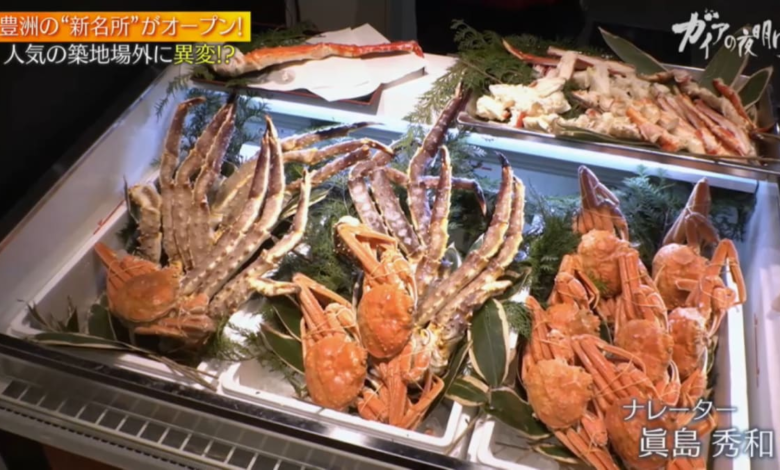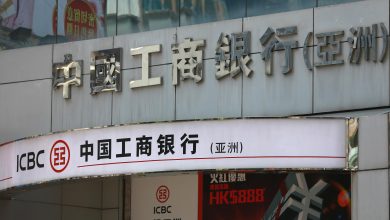Gaia Series 41: New Nippon’s Fish River

Exploring Toyosu’s new landmark, where tradition meets innovation at Tokyo’s transformed fish markets.
A new era is unfolding with the establishment of Toyosu Senkyaku Banrai, a commercial facility in Tokyo designed to echo the historical Edo period. This episode takes us on an exclusive behind-the-scenes deep dive into the transformation and continuity of Tokyo’s iconic fish markets from Tsukiji to Toyosu, revealing the intertwining of tradition and modernisation in Japan’s culinary commerce.
The narrative begins in Toyosu, where the newly minted Toyosu Senkyaku Banrai stands as a beacon of historical homage and culinary innovation. Built to resemble the architecture of the Edo period, it’s not just an architectural triumph but a cultural revival, aiming to blend the rich history of Tokyo’s marketplaces with contemporary consumer needs.
Amid this setting, we are introduced to the heart of the facility—the largest restaurant managed by the major travel agency HIS, featuring an all-you-can-eat seafood buffet with fish taken directly from the Toyosu market. The buffet is a culinary theatre, offering daily demonstrations of tuna preparation, where chefs deftly slice through Pacific bluefin tuna—a sight that not only entertains but also educates visitors about Japan’s esteemed fishery practices.
The stakes are high for those operating within this new space. One poignant story comes from a travel agency staff member adapting to the demands of running a restaurant. His journey from novice to adept in selecting and preparing fish underscores the broader narrative of adaptation and skill acquisition that is palpable across Toyosu’s new market environment.
Meanwhile, the narrative contrasts with the lingering essence of Tsukiji, where tradition continues to thrive among local vendors. Despite the shift of the wholesale market to Toyosu, Tsukiji’s outer market remains a bustling hub of activity, especially targeted at foreign tourists, with most of its signages in English. The episode captures the spirit of Tsukiji through the eyes of vendors who regard the changes with a mix of nostalgia and resilience. They express a determination to preserve the soul of Tsukiji, fearing that without adherence to traditional selling practices, the market’s unique character could dissipate.
A telling moment occurs during a regular meeting of the Tsukiji Town Development Council, where concerns are raised about shops selling wares at exorbitant prices to foreign tourists: A seafood rice bowl sells for 18,000 yen (156 SGD) and a skewer of sirloin and sea urchin at 6,000 yen (52 SGD). This predatory selling has detracted from the spirit of Tsukiji, which has always been about selling genuine products at appropriate prices.
The council debates strategies to ensure that Tsukiji retains its depth of culture and authenticity, emphasising the need to communicate the true value of their products to a global audience.
One such novel strategy takes shape in the form of an official walking tour, designed to bridge the gap between the many specialist stores’ storied pasts and their burgeoning future. Spearheaded by Kinya Asada of Asada Suisan, the tour aims to showcase the authentic charm of these culinary hubs.
Asada, driven by a commitment to maintain the markets’ integrity, collaborates with local businesses and the Imperial Hotel to create an immersive experience for visitors. He expresses a fervent hope that through these tours, both locals and international guests will gain a deeper appreciation of the traditional food culture that defines these spaces. This sentiment is echoed by other vendors, who see the potential of these tours to educate tourists about the rich history and meticulous craft that underpin their daily trade.
Adding to the complexity of these intertwined markets is the effort by local businesses to adapt to the influx of tourism driven by the new developments at Toyosu. We witness a business owner from Tsukiji, now operating at Toyosu, grappling with the balance between modern demands and traditional practices. This delicate balance is crucial as they navigate customer expectations and the heritage of their craft.
The episode shows the pressures faced by these businesses. It highlights both the opportunities and challenges that come with the territory of modern retail and tourism in historic markets. From the detailed preparation of tuna to the strategic discussions among market veterans, every moment is a testament to the intricate dance between preserving heritage and embracing innovation.
As Toyosu Senkyaku Banrai ushers in a new chapter for Tokyo’s fish markets, it doesn’t just represent a physical relocation or aesthetic transformation but signals a deeper cultural shift. The episode richly encapsulates how these markets serve as a microcosm of Japan’s broader struggles and triumphs in marrying the old with the new.





